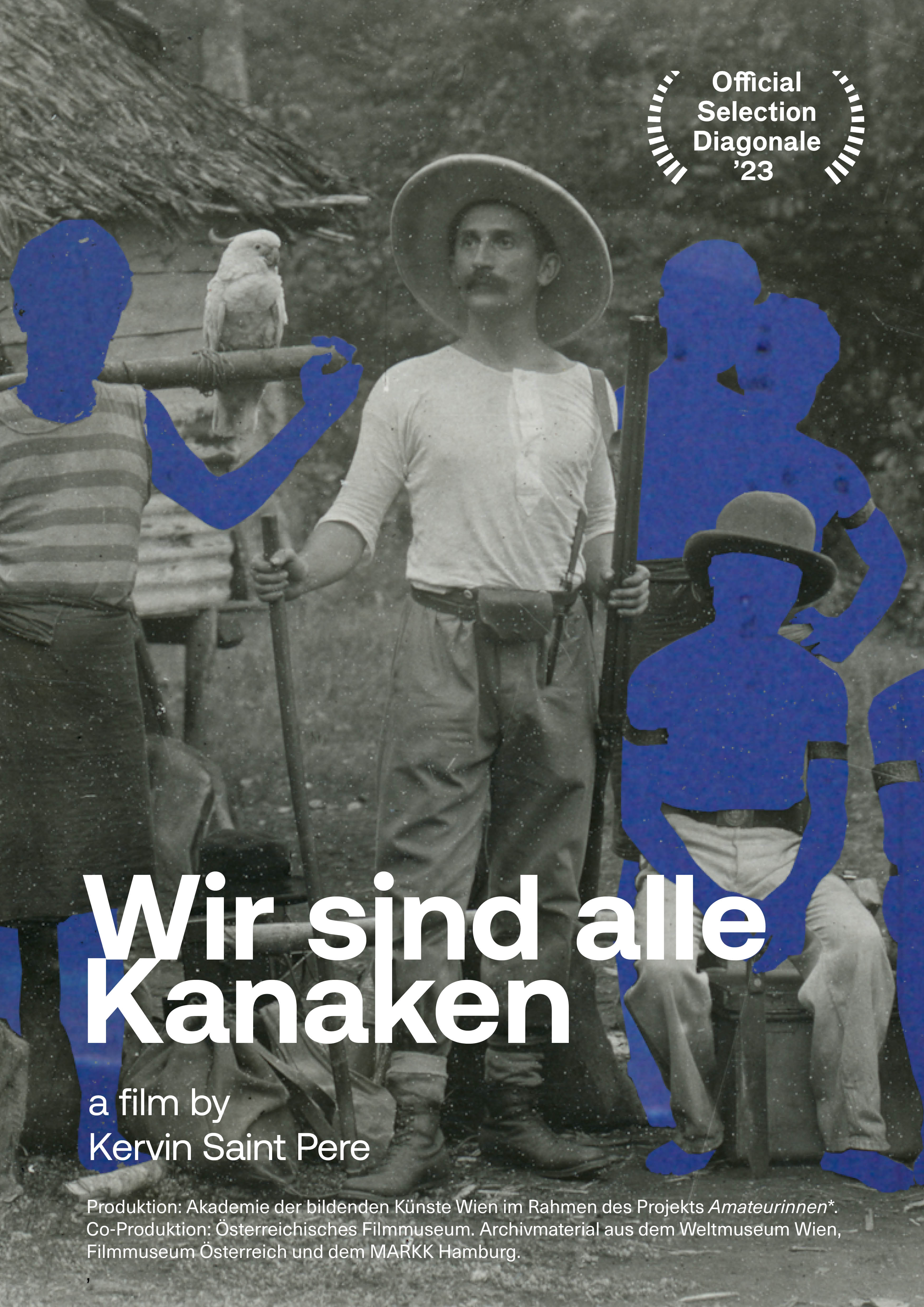We are all
Kanaken
Experimental Documentary20:20 Min. 2021
In his essay film, «Wir sind alle Kanaken», Kervin Saint Pere demonstrates the complex layers of meaning associated with the term «Kanake» which have been violently imposed through European colonialism. The usage of the term is closely tied to racist practices of European colonization in the Global South and continues to be used to legitimize violence today. Saint Pere tackles these colonial practices, for it is through images, non-scientific myths and «theories» that the person designated as Kanake is dehumanized, degraded and marked as the Other and the Stranger.
From the historical postcards and photographs of the colonies that appear in the film, the very people who are being objectified are cut out and ghostly superimposed on filmic archival footage of European expeditions. The created stencils condense the cinematic gaze, magnifying, like a second camera eye on the colonial own gaze. What viewers no longer see in the film are images of people reduced to «scenes of violence», but those who have made these categorizations and devaluations, namely: the Europeans. Saint Pere creates a reversal through this emphasis; the Europeans, who appear as observers in heroic-looking poses, become the critically scrutinized object. The repetition of the sentence «As in the thought patterns of the European colonies» in the voice-over precisely illustrates that the current meanings of the term «Kanake» as guest workers, refugees and so-called non-integrated people are still linked to colonial and racist images. In the past and present, the word serves to legitimize violence through categorizations, to ensure unjust order, and to maintain structures of domination and discrimination.(Cana Bilir-Meier)
From the historical postcards and photographs of the colonies that appear in the film, the very people who are being objectified are cut out and ghostly superimposed on filmic archival footage of European expeditions. The created stencils condense the cinematic gaze, magnifying, like a second camera eye on the colonial own gaze. What viewers no longer see in the film are images of people reduced to «scenes of violence», but those who have made these categorizations and devaluations, namely: the Europeans. Saint Pere creates a reversal through this emphasis; the Europeans, who appear as observers in heroic-looking poses, become the critically scrutinized object. The repetition of the sentence «As in the thought patterns of the European colonies» in the voice-over precisely illustrates that the current meanings of the term «Kanake» as guest workers, refugees and so-called non-integrated people are still linked to colonial and racist images. In the past and present, the word serves to legitimize violence through categorizations, to ensure unjust order, and to maintain structures of domination and discrimination.(Cana Bilir-Meier)
